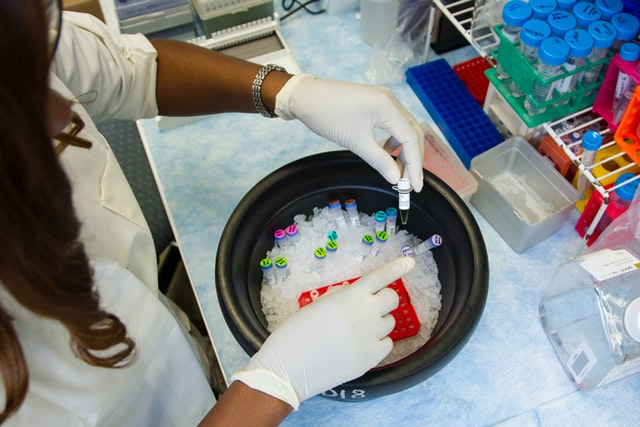In light of last week’s long-awaited FDA decision on experimental Alzheimer’s treatment aducanumab, a panel of clinical trials experts looks at why Alzheimer’s drug trials have such a high failure rate and what we can do differently in the future.
To date, experts say, Alzheimer’s drug trials have fostered a one-size-fits-all approach. For a disease that manifests differently in many different types of patients, experts call for more customization in hopes of landing long-awaited success.
The failure rate of Alzheimer’s disease drug development has remained unchanged for decades — with 99 percent of trials showing no difference between the drug and placebo. This figure is especially high, considering the ever-growing number of drug candidates in the pipeline. With this in mind, some experts have turned their focus to understanding why clinical trials for Alzheimer’s treatments continue to provide bleak outcomes, and what changes need to be made in order to crack the code on effective Alzheimer’s treatments and cures.
Last month, the Alzheimer’s Drug Discovery Foundation (ADDF) and The Association for Frontotemporal Degeneration (AFTD) convened an expert panel of researchers, clinicians, statistician from academia, biotech and pharmaceutical companies to answer just this question. Together, the experts outlined four ways clinical trials can achieve proof of concept more rapidly — and at an overall lower cost.
Without the barriers presented by high costs, researchers may be able to conduct more trials, sooner, speeding up the search for a treatment.
Rethinking Clinical Trials for Alzheimer’s
Among their recommendations, the panel’s consensus was to focus on Phases 1 and 2 of exploratory trials — which evaluate a drug’s safety and effectiveness on patients. In doing this, they said, researchers will have a better chance of weeding out the programs that are least likely to succeed. Engaging statisticians early in the planning stage, the experts suggested, is one way to provide data-driven evidence to determine a drug’s chances of success.
Knowing this will minimize the amount of drugs without much promise from engaging in Phase 3, where large numbers of human patients may be engaged in long-term treatment periods to test the given drug’s cognitive, behavioral and functional effect. Once this very specific group of participants is recruited and enrolled — which is labor-, time-, and money-intensive, the study then has its own high costs that could span decades.
Dr. Howard Fillit, ADDF founding executive director and chief science officer, is among the experts who see great promise in this shift in perspective. By evaluating the numbers in Phases 1 and 2 more, the majority of clinical development costs that arise in later stage Phase 2b and Phase 3 studies can be avoided, Fillit explained in the panel.
“Results from exploratory Phase 2a trials are the critical inflection point, when researchers decide which drugs to move into these larger and more expensive trials, so clearly these Phase 2a trials need to be as rigorous and well-designed as possible,” he wrote.
Fresh Designs for Alzheimer’s Trials
Another way to accomplish more efficiency, the experts shared, is through normalizing adaptive trial designs. This new approach could allow researchers to process early-stage data in real time and improve the trial accordingly. Any modifications made, however — like making the required sample size smaller, or altering the length of the trial, would have to be in line with pre-specified rules laid out by the researchers. The panel also recommended using comparable data from past trials to better contextualize their findings and to find ways to make the trials easier on participants.
More Targeted Alzheimer’s Trials for Better Results
Lastly, the panel urged those conducting clinical trials to make sure the design is as ‘tailored and optimized’ as possible, in order to avoid a one-size-fits-all approach.
Yet, the persistent diversity problem in Alzheimer’s drug trials is a major pitfall: Study cohorts rarely reflect the disease’s disproportionate burden on women and minorities.
It is estimated that by 2030, approximately 40 percent of those affected by Alzheimer’s will be Black and Hispanic. It’s imperative that the composition of trials represent the makeup of real-world populations, especially in terms of Alzheimer’s, said Stephanie Monroe, executive director of AfricanAmericansAgainst Alzheimer’s, in an interview at Biotechnology Innovation Organization’s annual meeting. “When you don’t have inclusion of diverse communities, you run the risk of making assumptions about drug safety and effectiveness that may not be accurate. Generalizing findings of the current majority of participants – white, European men – to African-Americans, Latinos, women and others may be embracing false assumptions about the lack of differentiation between what is fast becoming the new majority.”
The lack of inclusion can be attributed to a few factors: inaccessibility, high cost and general mistrust of biomedical research, according to LatinosAgainstAlzheimer’s coalition head Jason Resendez. He said that many of these trials often take place “ivory tower institutions who are serving their immediate community, which tend to be higher-resourced individuals who are predominantly white.”
Making Trial Recruitment and Onboarding Processes More Inclusive
According to Resendez, with the United States’ long history of exploiting minorities, it’s no wonder that Black and brown communities remain skeptical of biomedical research.
“From Tuskegee to the army testing mustard gas on Puerto Ricans without their consent, so there’s a long history of the research community exploiting under-resourced people of color,” Resendez told Being Patient. “That has created a lot of mistrust, and we have to address that mistrust.”
One way to address this, he said, is by streamlining the trial participant consent-form process by making them easier for the target audience to understand.
“You have to gain consent from participants so that you are protecting their rights,” Resendez said. “They understand their rights, they understand the risks, but some of these consent processes are 25 pages of scientific jargon. Some of them are not really at the literacy level of the community.”
In order to develop effective medicines that work for the diverse population it affects, a combination of the aforementioned recommendations must be employed in clinical trials. “Clinical trials are also how patients get early access to treatments that are experimental, but potentially life-saving,” Resendez explained. “The ability to develop effective medicines that work for all is essential to building a healthier America and eliminating health disparities. AFTD CEO Susan L-J Dickinson said “these four recommendations can lead to more efficient trials, with substantial financial savings, as well as more strategic and effective engagement of patients.”



